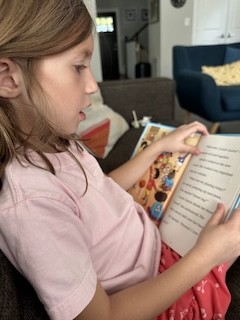The National Assessment of Educational Progress (NAEP) began testing fourth-, eighth-, and twelfth-graders in 1970 to find out how well American kids could read. NAEP was to evaluate national reading performance twice a decade. The idea wasn’t to provide an estimate of how well each child could read, but simply to index the level of American literacy. In fact, back then NAEP wasn’t even allowed to describe how the individual states were doing; and, at that time no states were evaluating reading.
Boy, have things changed.
In the early 1990s, NAEP expanded to permit state comparisons—meaning that more students had to be tested to provide adequate samples from each individual state. Instead of a twice per decade look, NAEP now monitors reading every other year.
In the early 1970s, Michigan established its own testing scheme—based on the NAEP model—and by 2000, every state had adopted such a regimen.
Now state testing is much more ambitious. No longer limited to NAEP-style sampling estimates, now most kids at most grade levels are tested, and sometimes with high-stakes outcomes for the kids (e.g., retention, summer school).
And, that doesn’t even scrape the surface of what individual districts and schools have been doing: screening and monitoring, diagnosing and dip-sticking, benchmarking and “using the data.”
What’s the purpose of this ten-cent history lesson?
Not just to point out how ubiquitous testing has become in the reading lives of most teachers and students. That’s well known.
My contention is that this massive testing effort has led teachers to an unfortunate conception of reading comprehension.
Simply put: Reading is NOT the ability to answer certain kinds of questions about a text.
Reading is the ability to make sense of the ideas expressed in a text; the ability to negotiate the linguistic and conceptual barriers or affordances of a text.
Students who can make sense of a text’s ideas will be able to answer any kind of questions about that text. While students who fail to scale those linguistic and conceptual barriers will struggle with the simplest of questions.
Our job as teachers is to teach kids to read text successfully.
Not how to answer knowledge, comprehension, analysis, synthesis, or evaluation questions.
Not how to answer “right there,” “think and search,” “author and me,” or “on my own” questions.
Not how to answer main idea, detail, inference, out of context, logical structure, or author’s tone questions.
What does it mean to teach kids how to read text effectively?
Initially, it means making certain that they can decode proficiently; so proficiently that they can decode the words without much conscious attention. With really simple texts (e.g., “Look, Dick, look”), decoding is usually sufficient to enable understanding. With such texts, there isn’t much language demand (in terms of vocabulary, syntax, cohesion, text structure), there isn’t much memory demand (only three words), and there isn’t much conceptual demand either (these ideas are pretty concrete and likely to be within most kids’ experience, so decoding is the main barrier here).
That’s why decoding isn’t enough. Texts are going to place increasing demands on students’ linguistic abilities, memories, conceptual analysis, logic, and knowledge of the world. Those demands—not question types—are the potential barriers to kids’ comprehension.
The teaching of reading comprehension and learning from text should focus on how to make surmount these cognitive, linguistic, and intellectual barriers. Rather than having kids practice answering particular kinds of questions, comprehension instruction should be aimed at teaching students:
- Word meanings and the meaningful parts of words (morphology).
- How to infer word meanings from context and structure.
- How to untangle the complex syntax of sentences.
- How to interpret the cohesive links across a text.
- How to identify and interpret the organizational plan or structure of a text and how to use this organization as a memory aid.
- How to interpret an author’s tone.
- How to use (and not overuse) one’s knowledge to help make sense of a text.
- How to summarize text information effectively.
- How to monitor one’s comprehension—recognizing whether understanding is taking place and taking appropriate action if it is not.
- How to rehearse text information so that it is remembered/learned.
- How to interpret the graphic elements of texts (e.g., illustrations, charts, graphs, tables).
- To develop the reading stamina required for understanding longer texts.
- To recognize what a text says and what it does not.
- How to compare and combine information appropriately from multiple texts.
My claim isn’t that this list is everything, beyond decoding, that readers need to master in order to comprehend. But the point should be obvious: major attention needs to be spent on reading and making sense of texts rather than upon answering particular types of questions about texts.
Many of the items in this list could be practiced on worksheets and whiteboard exercises. It would be best, however, if they were confronted with extended texts that students are trying to make sense of.
Text choices matter greatly in this kind of teaching. If one was working on tone, for instance, it might be sensible to read a series of texts: starting, perhaps, with some in which the author is explicit about his or her attitudes (the kids would just need to find examples of the explicitly stated viewpoint), followed by other texts with an unstated but easily discerned tone, to texts with more subtle and even ambiguous tones or that communicate tone in different ways.
Comprehension teaching shouldn’t be aimed at ensuring that kids have sufficient practice answering tone questions, but making sure they have had sufficiently thorough and varied experience with the issue of tone in interpreting text meaning. Since different texts communicate tone in different ways and since tone plays a varied role in interpretation (very important in literary and history reading, not so much in science and math), it is critical that kids learn to handle the concept across those different reading situations.
As Yoda (yeah, the Star Wars' guy) might say: When it comes to teaching comprehension, the questions it is not, the texts it is.







Comments
See what others have to say about this topic.